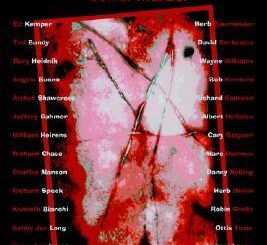|
|
US government fights to keep ‘disturbing’ force-feeding Gitmo footage secretPosted: 22 Jan 2016 05:32 PM PST
Guantanamo prisoner held for 13 years on mistaken identity cleared for release The Obama administration is pushing ahead with its efforts to keep secret an “extremely disturbing” tape of a Guantanamo detainee being force-fed. Having missed a federal court’s deadline, it has notified a judge that it would again appeal the order. According to The Intercept, the DoJ has until January 22, 2016 to release 11 hours of video material, showing Guantanamo guards using what DC District Court Judge Gladys Kessler said was “a particularly rough treatment” of Syrian detainee Abu Wa’el Dhiab. The footage shows Dhiab, who was hunger striking at the time, being pulled from his cell and fed against his will by six guards in “riot squad” gear, according to Reprieve, the organization that helps Dhiab in his legal battle against President Barack Obama. His lawyer described the footage as “extremely disturbing” after examining 28 of 32 total videotapes. “I’ve had a lot of trouble sleeping this week as a result of watching these tapes,” Alka Pradhan told Al Jazeera at the time. The fight between the DoJ and Kessler to keep the force-feeding tapes hidden has been ongoing for just as long. The tapes were first ordered to be released in October 2014, after 16 news companies, including the Associated Press, ABC, the Guardian, and the New York Times, requested them from court records. The government appealed that order, but was denied in May of last year. Then in July 2015, officials made another attempt to persuade Kessler to reconsider her decision, citing national security fears. They argued that if released, the footage would “inflame Muslim sensitivities” and “subject the US Government to criticism.” Kessler rebuked the arguments, saying: “What the Government is really saying is that its classification system trumps the decisions of the federal courts as to the public’s access to official court records; in other words, the Executive Branch (in this case, the Military) purports to be a law unto itself.” This is when she scolded the US government for what she said was “as frivolous an appeal as I’ve ever seen.” In October 2015, citing “transparency” of the government’s actions as “a cornerstone” of America’s democracy, Kessler again cut short the DoJ’s efforts to continue hiding the video. “I want Americans to see what is going on at the prison today, so they will understand why we are hunger-striking, and why the prison should be closed,” he said upon his release. “If the American people stand for freedom, they should watch these tapes. If they truly believe in human rights, they need to see these tapes.” Closing the military base-tuned-prison in Cuba was one of President Obama’s major promises since his 2008 presidential campaign. Now, six years on and 14 years since it started operating, 91 inmates remain. Read more: https://www.rt.com/usa/329756-guantanamo-force-feeding-video/ The post US government fights to keep ‘disturbing’ force-feeding Gitmo footage secret appeared first on We Are Change. |
| FBI ran website sharing thousands of child porn images
Posted: 22 Jan 2016 05:24 PM PST
WASHINGTON — For nearly two weeks last year, the FBI operated what it described as one of the Internet’s largest child pornography websites, allowing users to download thousands of illicit images and videos from a government site in the Washington suburbs. The operation — whose details remain largely secret — was at least the third time in recent years that FBI agents took control of a child pornography site but left it online in an attempt to catch users who officials said would otherwise remain hidden behind an encrypted and anonymous computer network. In each case, the FBI infected the sites with software that punctured that security, allowing agents to identify hundreds of users. The Justice Department acknowledged in court filings that the FBI operated the site, known as Playpen, from Feb. 20 to March 4, 2015. At the time, the site had more than 215,000 registered users and included links to more than 23,000 sexually explicit images and videos of children, including more than 9,000 files that users could download directly from the FBI. Some of the images described in court filings involved children barely old enough for kindergarten. That approach is a significant departure from the government’s past tactics for battling online child porn, in which agents were instructed that they should not allow images of children being sexually assaulted to become public. The Justice Department has said that children depicted in such images are harmed each time they are viewed, and once those images leave the government’s control, agents have no way to prevent them from being copied and re-copied to other parts of the internet. Officials acknowledged those risks, but said they had no other way to identify the people accessing the sites. “We had a window of opportunity to get into one of the darkest places on Earth, and not a lot of other options except to not do it,” said Ron Hosko, a former senior FBI official who was involved in planning one of the agency’s first efforts to take over a child porn site. “There was no other way we could identify as many players.” Ron Hosko, assistant director of the FBI’s Criminal The FBI hacks have drawn repeated – though so far unsuccessful – legal challenges, largely centered on the search warrants agents obtained before agents cracked the computer network. But they have also prompted a backlash of a different kind. In a court filing, a lawyer for one of the men arrested after the FBI sting charged that “what the government did in this case is comparable to flooding a neighborhood with heroin in the hope of snatching an assortment of low-level drug users.” The defense lawyer, Colin Fieman, asked a federal judge to throw out child pornography charges against his client, former middle school teacher Jay Michaud. A federal judge is scheduled to hear arguments on that request Friday. Federal agents first noticed Playpen not long after it went online in August, 2014. The site was buried in what is often called the “dark web,” a part of the internet that is accessible to the public only through Tor, network software that bounces users’ internet traffic from one computer to another to make it largely untraceable. By March of last year, the FBI said, Playpen had grown to become “the largest remaining known child pornography hidden service in the world,” the Justice Department said in a court filing. FBI agents tracked the site to computer servers in North Carolina, and in February seized the site and quietly moved it to its own facility in Newington, Va. The FBI kept Playpen online for 13 days. During that time, federal prosecutors told defense lawyers that the site included more than 23,000 sexually explicit images and videos of children. Some of those could be downloaded directly from the government’s computers; others were available through links to other hard-to-find locations on the web, Fieman said. One section of the site was labeled “toddlers,” according to court records. And prosecutors said that some of the images users accessed during the time Playpen was under the government’s control included “prepubescent female” having sexual intercourse with adults. Fieman said more than 100,000 Playpen registered users visited the site while it was under the FBI’s control. The Justice Department said in court filings that agents had found “true” computer addresses for more than 1,300 of them, and has told defense lawyers that 137 have been charged with a crime, though it has so far declined to publicly identify those cases. Law enforcement has long complained that online services like Tor create a type of safe haven for criminals because they hide the unique network addresses from which people connect to sites on the internet. Officials said the only way for the government to crack that network was to take over the site and infect it with malware that would trick users’ web browsers into revealing their real internet addresses, which agents could then trace back to the people who were using them. “The government always considers seizing an illegal child pornography site and removing it from existence immediately and permanently,” Justice Department spokesman Peter Carr said. “While doing so would end the trafficking of child pornography taking place on that one website, it would do nothing to prevent those same users from disseminating child pornography through other means.” Still, he said, “The decision whether to simply shut down a website or to allow it to continue operating for a brief period for a law enforcement purpose is a difficult one.” Justice officials said they were unable to discuss details of the investigation because much of it remains under seal, at their request. The Justice Department said in court filings that agents did not post any child pornography to the site themselves. But it did not dispute that the agents allowed images that were already on the site to remain there, and that it did not block the site’s users from uploading new ones while it was under the government’s control. And the FBI has not said it had any ability to prevent users from circulating the material they downloaded onto other sites. “At some point, the government investigation becomes indistinguishable from the crime, and we should ask whether that’s OK,” said Elizabeth Joh, a University of California Davis law professor who has studied undercover investigations. “What’s crazy about it is who’s making the cost/benefit analysis on this? Who decides that this is the best method of identifying these people?” The FBI was first known to have operated a child porn site in 2012, when agents seized control of three sites from their operator in Nebraska. FBI Special Agent Jeff Tarpinian testified that the government “relocated two servers to an FBI facility here in Omaha and we continued to let those child pornography run – websites operate for a short period of time.” The next year, the FBI took control of a dark web site known as Freedom Hosting. The man prosecutors have accused of operating that site, Eric Marques, is due to be extradited to the United States; the charges against him remain sealed. The FBI revealed its role in an Irish court hearing covered by local media. In each case, the FBI injected the site with malware to crack Tor’s anonymity. Those hacks, developed with the help of outside contractors, were a technical milestone. When the FBI first realized it could break through Tor, Hosko said the agency gathered counterterrorism investigators and intelligence agencies to see if any of them had a more pressing need for the software. “It was this, exponentially,” Hosko said.
http://www.usatoday.com/story/news/2016/01/21/fbi-ran-website-sharing-thousands-child-porn-images/79108346/ The post FBI ran website sharing thousands of child porn images appeared first on We Are Change. |
















